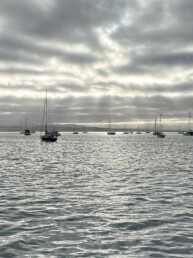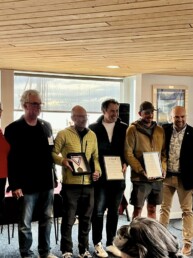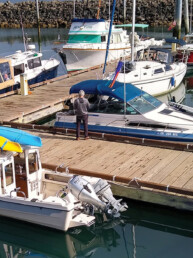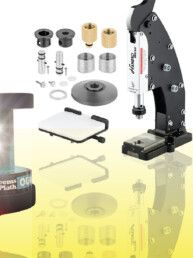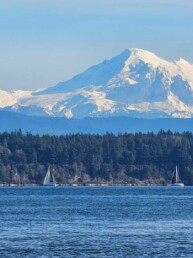The latest in Jeanneau’s next-generation Sun Odyssey range is the 380. The boat made its debut in 2021, but it wasn’t until recently that I had a chance to get out on one. No doubt that this is a comfortable cruising design with loads of modern amenities, but so much of what Jeanneau has done with the 380 takes user-friendly up a level. It’s sailor friendly, and will help its owners sail more enjoyably and with greater ease than they might on some competing designs. Sailing the boat was equal parts impressive and delightful.
Many of the 380’s design elements are aligned with others in the range, and that’s a very good thing (you may recall how dazzled I was with the 440 when I sailed it in 2018). The new 380 is designed by Marc Lombard (regular readers may note that this is the same designer in last month’s boat test). Aesthetically, it looks very contemporary and sexy, generally a smaller evolution of its larger siblings. Similar to the 440, and central to all the latest Sun Odysseys, the new 380 uses Jeanneau’s “Scow Bow” design, with its full-length hard chine and broad, gently rounded bow knuckle. I know I’m a broken record, but it bears repeating — the choice for full-length hard chines increases interior volume without adding extra wetted surface and provides hull form stability when a boat is heeled on its chine. Jeanneau’s application of the hard chine at the stem brings it close to the water and the broader bow shape gives this bow-up, almost skip-above-the-wave sensation, the antithesis of a wave piercing bow. Notably, the stem angle of the 380 goes beyond plumb to what’s referred to as a “negative” bow, in which the knuckle is farther forward than the bow at deck level. It looks great, especially with the bowsprit above it, and is stretching available waterline length to its reasonable maximum.
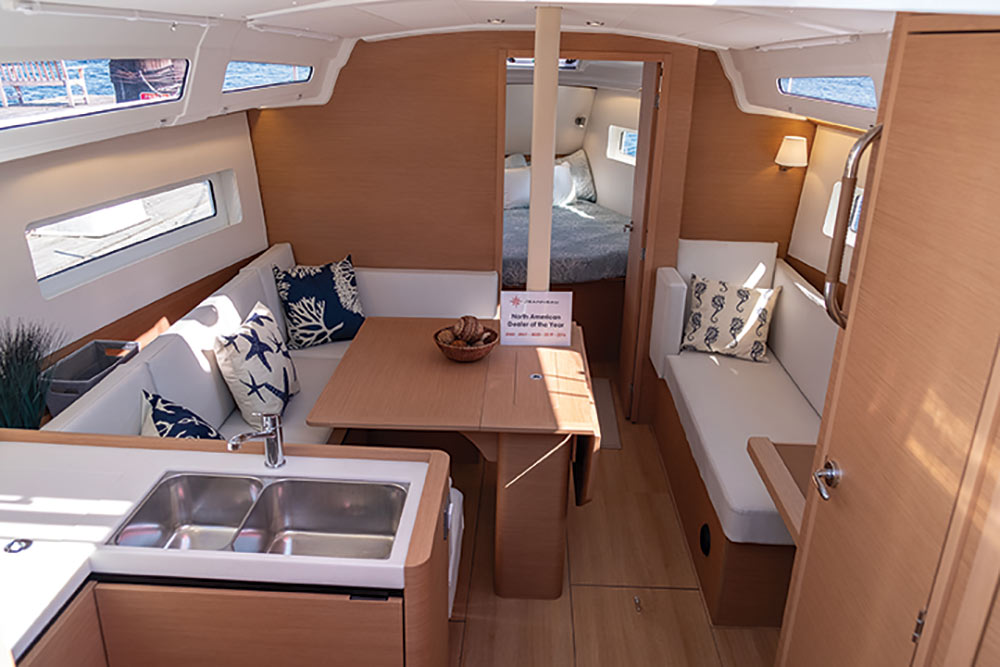
You’ll also find walk-around side decks, an innovation the 380 shares with its predecessors. This essentially wraps the cockpit, helm station, and outboard side deck around each side’s cockpit seating area, before the outboard deck slopes gently upwards from the cockpit level to deck level just forward of the shrouds. The application of this walk-around deck on the 380 is elegantly done considering its comparatively small footprint — the 380 is just under 37 feet in length on deck, plus the bowsprit. The “wrapping” cockpit sole offers sitting or standing options at the helm with seats on the aft coaming and, importantly, a standing position to trim the primary winches, which are located on the aft portion of the cockpit seats, from aft and outboard. This is a brilliant posture not only for efficient winch grinding, but also for a view of the sail you’re trimming, and the winches are still in arm’s reach of the helm station. Of interest to me was the way the side decks bring the cockpit seats closer together. There’s still plenty of room to move fore and aft along the cockpit table’s stainless steel frame with folding leaves (also a great handhold), and I appreciated the narrower layout. In a seaway, it’s not really an advantage to have an open cockpit with most of the boat’s 12-foot 3-inch beam between the seats when crossing, or potentially falling, from side to side. The 380 makes more practical use of the space.
Of course, the walk around design also provides convenient access to the side decks up the ramps. The 380, also like others in the range, uses outboard chainplates for the shrouds, which adds width and stability to the rig while making them easier to work on, as well as removing a major source of potential water ingress from the deck. The enduring compromise of this design is that a sailor must maneuver underneath the lower shroud to go forward on the 380’s side decks — something I find most easily done by holding the lower shroud and kind of swinging through, though you can also step up on the cabin top closer to the mast. Nearly all of the sailing and boat handling can be done from aft of the shrouds and accessing the mast is just as easy; but for anchoring or docking, cruisers will get quite comfortable with how best to move fore and aft quickly under the shroud.
I was a little surprised to find a rig with no backstay, but with two sets of significantly swept spreaders, the standing stay’s removal enables those complexities of the aft deck layout and still retains its offshore capability, and allows for the use of a square-top mainsail. Another user-friendly attribute to the 380’s rig is a gooseneck that meets the mast quite low to the deck, but the boom slopes up slightly as it goes aft, which resembles some older catamaran designs, as well as the most cutting-edge IMOCA racing yachts. This arrangement allows easy reach to the sail pack and headboard of the mainsail without having to climb partway up the mast, even for sailors who aren’t very tall.
As with so many current production models, the same basic boat is available in a wide array of configurations — we get so much choice. Among the options on the Jeanneau 380, there are three keel options (shoal, deep fixed, and lifting), and three mainsail choices (a roller-furling option, and either a classic triangular or performance square top that are traditionally rigged). Our test boat was the “Performance” version with the deeper fixed keel and square-top main, and this trend toward improved performance really shined.
On the day I got to go sailing on the new Jeanneau 380, we rolled the conditions-dice and hit the jackpot — warm autumn sun and 10-13 knots of beautiful northerly breeze on Seattle’s Lake Union. So often, I test a new design and wind up saying, “I can see what the boat will be able to do in conditions that favor it.” In this case, I got to see the 380’s capabilities first-hand.
We raised the sails, which are a high quality laminate cloth on the Performance package, and they filled with good-looking shapes from the jump. The 380 utilizes the near-ubiquitous German mainsheet system, and the mainsheet runs to the primary winches, which it shares with the jib sheets with clutches just forward. The main’s spectra bridle system will keep the boom just below centerline sailing upwind and thus forgoes a traveler track. The sheeting system for the 110% genoa is a sophisticated floating lead, with dual offset lead adjustments allowing for movement inboard and outboard, and up and down. I was able to manipulate the jib shape significantly and intuitively which, for a racing jib trimmer like me, was pleasing on a cruising boat.
In our perfect moderate breeze, it was impossible not to feel how well the design worked together. Heeled comfortably to its stable chine, the hull shape driving forward without a tendency to round-up, all with a gentle bit of “feel” in the helm — it was astonishingly good. The 380 has twin rudders, and for once I didn’t miss the feel of a single rudder as the 380 absorbed the puffs in stride and the helm gave a mild response as the boat moved easily forward. In Lake Union’s flat water, I didn’t feel the buoyant scow-bow motion, but I am confident it would have felt well-matched to the rest of the design were the breeze conditions paired with waves. I couldn’t say without trying its roller-furling alternative, but I suspect the additional sail area of the square-top main contributed to the good experience, since the total sail area isn’t huge.
We cruised at all points of sail, and the boat only seemed to slow down on the broadest reach — an angle that has particular compromises with the aft-sweep of the rig’s spreaders anyway. If I were purchasing this boat, you can be sure I’d also be excited to add the furling Code Zero to rig off of the bowsprit. Still, the two sails of the Performance package left me awfully impressed on their own.
Speaking of the bowsprit, not that we used it in our test, but the anchor roller is set well forward in the bowsprit, helping get it out over the negative bow shape. This aspect of the design is a good reminder that the 380 is striking a harmonious chord between the fun elements of a great sailing experience and still never losing sight of its ultimate use-case, which is comfortable cruising with friends and family.
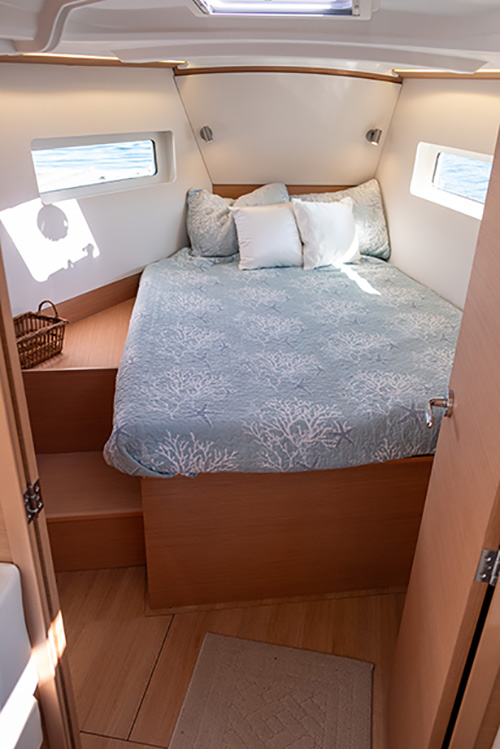 Enabling that cruising experience is a thoughtfully laid-out interior which, you guessed it, comes in a couple options. On our test day, I was able to look at both versions in person: a two-cabin one-head layout that has a separate shower room and a big storage garage space, and a three-cabin two-head version in which the third cabin uses the space of the separate shower and storage garage for more living quarters. Each serves its purpose well, with the two-cabin version clearly offering more storage and liveability for a couple or small family that might be cruising longer distances.
Enabling that cruising experience is a thoughtfully laid-out interior which, you guessed it, comes in a couple options. On our test day, I was able to look at both versions in person: a two-cabin one-head layout that has a separate shower room and a big storage garage space, and a three-cabin two-head version in which the third cabin uses the space of the separate shower and storage garage for more living quarters. Each serves its purpose well, with the two-cabin version clearly offering more storage and liveability for a couple or small family that might be cruising longer distances.
Regardless of the interior layout, the cabin is bright and spacious feeling with large portlights and no storage compartments above the main salon settees. There’s a fixed chart table to starboard facing aft, while the galley is to port. The galley isn’t enormous, but gives more room for comfortable seating around the table. Remarkable on a boat of this size, the forward cabin retains standing head room, and has a large rectangular berth, giving it a real owner’s cabin vibe. The storage in each cabin isn’t world-beating, but was ample enough to get me daydreaming about what I’d pack if I were to take a long trip up the Inside Passage.
Inside and out, the Jeanneau 380’s complex design priorities and innovative bells-and-whistles are well balanced and work together seamlessly. Especially in this Performance configuration, the 380 really is the whole package of a modern cruising boat for folks who want a great experience under sail.
Joe Cline is the Managing Editor of 48° North. Special thanks to Marine Servicenter for taking us sailing.
Joe Cline
Joe Cline has been the Managing Editor of 48° North since 2014. From his career to his volunteer leadership in the marine industry, from racing sailboats large and small to his discovery of Pacific Northwest cruising —Joe is as sail-smitten as they come. Joe and his wife, Kaylin, have welcomed a couple of beautiful kiddos in the last few years, and he is enjoying fatherhood while still finding time to make a little music and even occasionally go sailing.

